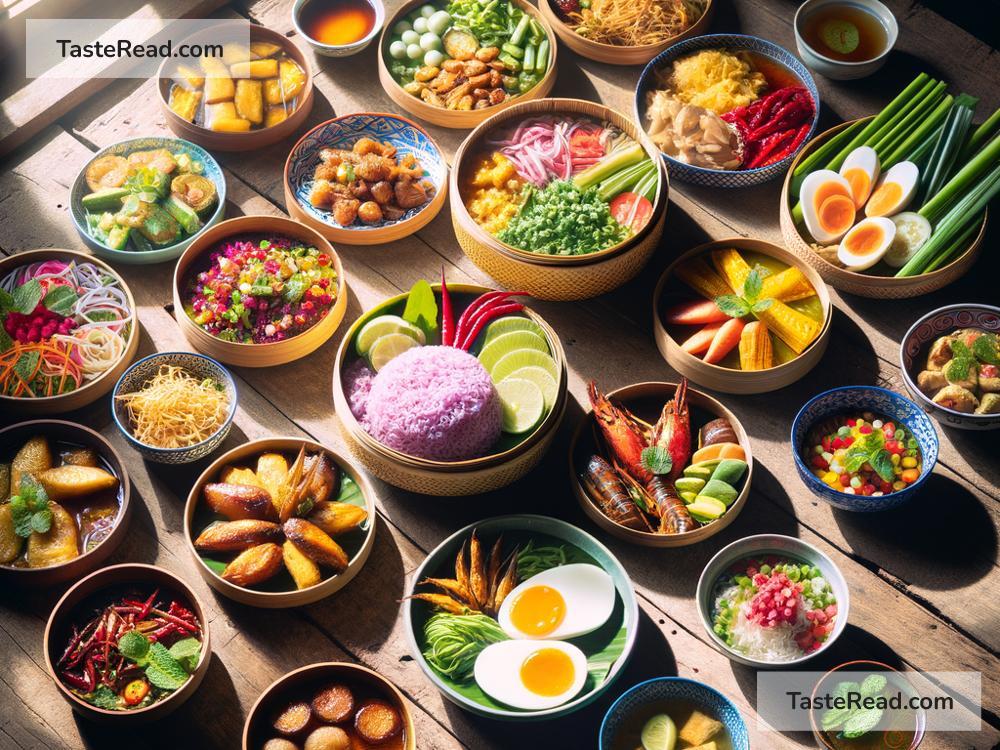Exploring Traditional Lunch Recipes in Southeast Asia
Southeast Asia, a remarkably diverse region, is a treasure trove of flavors, spices, and culinary traditions. From the bustling streets of Thailand to the vibrant markets of Vietnam, each country offers a unique palette of tastes and aromas. Exploring traditional lunch recipes in Southeast Asia is not just about enjoying delicious food; it’s a journey through centuries-old cultures, traditions, and the ingenious use of local ingredients. Let’s dive into some of the most iconic and mouth-watering lunch recipes that define the culinary landscape of Southeast Asia.
Thailand: Pad Thai
When thinking about Thai food, Pad Thai is often the first dish that comes to mind. This famous noodle dish is a perfect example of Thai flavor harmony—sweet, sour, salty, and spicy. Pad Thai is made with soaked dried rice noodles, which are stir-fried with eggs and tofu, flavored with tamarind pulp, fish sauce, dried shrimp, garlic or shallots, red chili pepper, and palm sugar. It’s served with lime wedges and often topped with roasted peanuts. It’s a street food marvel that has gained international fame.
Vietnam: Pho
Pho, a Vietnamese soup, is a soothing lunch option that is both simple and complex in flavors. This aromatic soup is a combination of broth, rice noodles, herbs, and meat—usually beef (Pho Bo) or chicken (Pho Ga). The magic of Pho lies in its broth, simmered for hours with spices like star anise, cinnamon, cloves, cardamom, and coriander, making it rich and deeply flavorful. Topped with onions, green onions, and a squeeze of lime juice, Pho is a refreshing meal, showcasing the elegance of Vietnamese cuisine.
Indonesia: Nasi Goreng
Nasi Goreng, or Indonesian fried rice, is a staple dish that you’d find being enjoyed by families and workers alike for lunch. This dish stands out because of its distinct use of kecap manis, a sweet soy sauce that adds a rich, caramel-like flavor. Fried with pieces of meat (chicken, shrimp, or beef), scrambled eggs, garlic, tamarind, chili, and topped with crispy shallots and served with cucumber slices and tomato for freshness, Nasi Goreng is an exciting play of textures and flavors.
Malaysia: Nasi Lemak
Nasi Lemak is often considered the national dish of Malaysia and is a fragrant rice dish cooked in coconut milk and pandan leaf, giving it a creamy texture and floral aroma. It’s traditionally served with fried crispy anchovies, roasted peanuts, hard-boiled or fried egg, fresh cucumber slices, and a dollop of spicy sambal on the side. Sometimes, it’s accompanied by fried chicken, squid, or beef rendang. Each component adds a layer of complexity making Nasi Lemak a satisfying meal.
Philippines: Adobo
Adobo could be considered the Philippines’ comfort food. This dish is all about marinating and simmering meat (usually chicken, pork, or sometimes both) in a mixture of vinegar, soy sauce, garlic, bay leaves, and black peppercorns. The result is a tangy, savory, and slightly sweet dish that is utterly addictive. Adobo is usually served with steamed white rice, which perfectly complements its rich flavors.
Cambodia: Amok
Amok is a quintessential Cambodian dish, typically made with fish that’s covered in a thick coconut milk curry and steamed in banana leaves which impart a unique flavor. The curry is seasoned with lemongrass, galangal, and kaffir lime leaves, making it fragrant and mildly spicy. It’s a beautiful blend of flavors and textures and is usually accompanied by rice. Amok is a testament to the sophisticated yet understated elegance of Cambodian cuisine.
Exploring traditional lunch recipes from Southeast Asia reveals not only the diversity in flavors and ingredients but also the shared culinary history and influences that pervade the region. Whether it’s the tangy and spicy Pad Thai, the soothing and aromatic Pho, the rich and flavorful Nasi Goreng, the creamy and fragrant Nasi Lemak, the savory and tangy Adobo, or the mild and delicate Amok, these dishes reflect the soul and spirit of Southeast Asia.
Enjoying these traditional lunches is more than just a meal; it’s an immersion into the culture and lifestyle of these vibrant countries. So, next time you’re pondering over what to have for lunch, why not take a culinary trip to Southeast Asia and explore the incredible variety of tastes and flavors it has to offer? It’s a journey well worth taking, without even leaving your kitchen.


